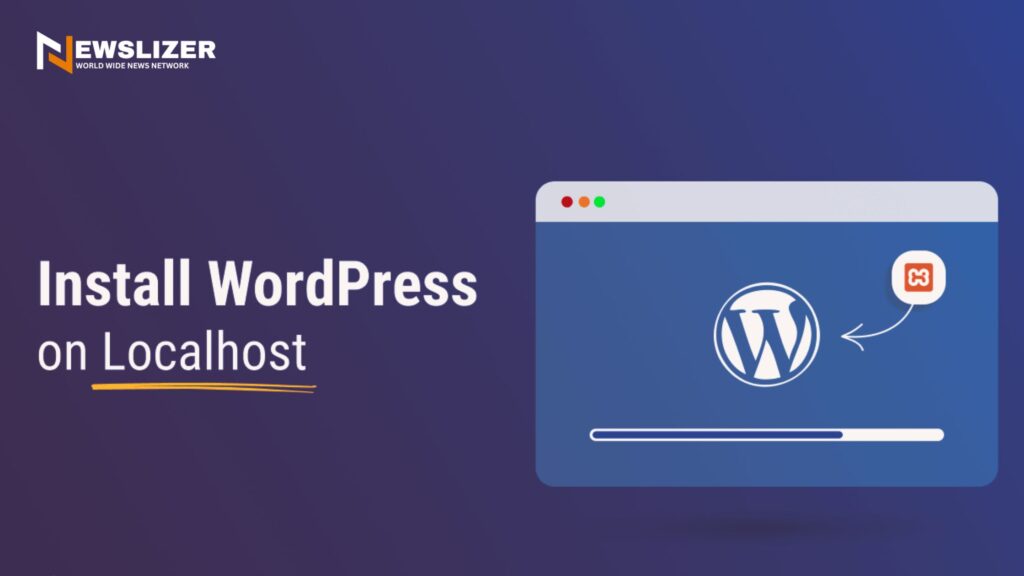
Setting up WordPress on your local host is a convenient way to test and develop your website without affecting your live site. Whether you are a beginner or an experienced developer, this step-by-step guide will walk you through the process of installing WordPress on your local machine. By the end of this tutorial, you’ll have a fully functional WordPress site running on your local server, ready for experimentation and customization. Let’s get started!
Step 1: Install a Local Server Environment
The first step in setting up WordPress on your local host is to install a local server environment. We recommend using XAMPP, a popular and user-friendly software that bundles Apache, MySQL, PHP, and other necessary components. Follow these steps to install XAMPP:
- Go to the Apache Friends website (https://www.apachefriends.org) and download the latest version of XAMPP compatible with your operating system (Windows, macOS, or Linux).
- Run the installer and follow the on-screen instructions to complete the installation process.
- Once XAMPP is installed, launch the control panel and start the Apache and MySQL modules.
Step 2: Create a MySQL Database
Before installing WordPress, you need to create a MySQL database. Follow these simple steps to set up a database for your WordPress site:
- Open your web browser and navigate to http://localhost/phpmyadmin/.
- Click on the “Databases” tab and enter a name for your new database (e.g., “wordpress_db”).
- Choose “utf8mb4_general_ci” as the collation, and click the “Create” button.
Step 3: Download and Install WordPress
Now that you have a local server environment and a database ready, it’s time to download and install WordPress:
- Visit the official WordPress website (https://wordpress.org) and download the latest version of WordPress.
- Extract the downloaded WordPress zip file to the “htdocs” folder within your XAMPP installation directory. Rename the extracted folder to your desired site name (e.g., “mywordpresssite”).
- Open your web browser and navigate to http://localhost/mywordpresssite (replace “mywordpresssite” with your folder’s name).
- The WordPress installation wizard will guide you through the process. Select your preferred language and click “Let’s go.”
- Enter the database details you created in Step 2 (database name, username, and password) and leave the rest as default. Click “Submit.”
- Click “Run the installation” and provide the required information (site title, username, password, and email) for your WordPress admin account. Click “Install WordPress.”
Step 4: Accessing Your Local WordPress Site
Congratulations! You have successfully installed WordPress on your local host. To access your site’s dashboard, follow these steps:
- Navigate to http://localhost/mywordpresssite/wp-admin (replace “mywordpresssite” with your folder’s name).
- Log in using the username and password you provided during the installation.
Step 5: Exploring the WordPress Dashboard
Once logged in, you will be taken to the WordPress dashboard, where you can manage and customize your site. Take some time to familiarize yourself with the various sections, including:
- Posts: Create, edit, and manage your blog posts.
- Pages: Add static pages to your site, such as an About Us or Contact page.
- Appearance: Customize your site’s appearance by installing themes and widgets.
- Plugins: Extend the functionality of your site by installing and activating plugins.
- Settings: Configure essential settings for your WordPress site.
Step 6: Installing Themes and Plugins
One of the advantages of working with WordPress on your local host is the ability to test themes and plugins without affecting your live site. To install themes and plugins, follow these steps:
- Themes: In the dashboard, navigate to “Appearance” > “Themes” > “Add New.” Browse through the available themes, click “Install,” and then click “Activate” to apply the theme to your site.
- Plugins: Similarly, in the dashboard, go to “Plugins” > “Add New.” Search for plugins by name or functionality, click “Install,” and then click “Activate” to enable the plugin on your site.
Step 7: Customizing Your WordPress Site
With your theme and plugins in place, you can now customize your WordPress site to make it uniquely yours:
- Customizer: Navigate to “Appearance” > “Customize” to access the WordPress Customizer. Here, you can modify site identity, colors, layout, and other settings depending on your theme.
- Widgets: Head to “Appearance” > “Widgets” to add and arrange widgets in your site’s sidebars and footer areas.
Step 8: Developing and Testing Your Website
Now that your local WordPress site is up and running, you can start building and testing your website without affecting your live site. Experiment with different themes, plugins, layouts, and content to see what works best for your needs.
Conclusion:
Setting up WordPress on your local host is a valuable skill that allows you to experiment, learn, and develop your website without making changes to your live site. By following this step-by-step guide, you’ve learned how to install WordPress on a local server environment, create a MySQL database, access your site’s dashboard, install themes and plugins, and customize your website. Embrace the freedom of the local development environment and have fun creating your dream WordPress site! Happy designing!
